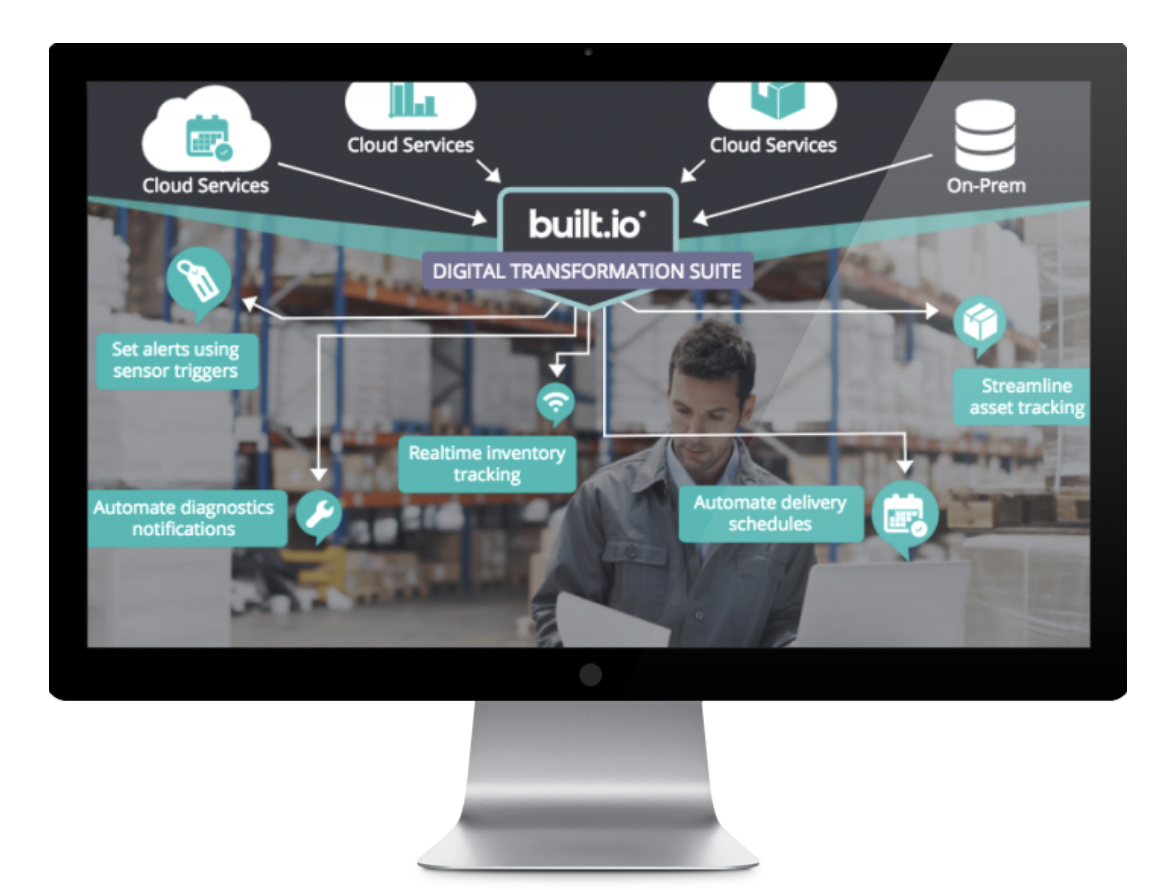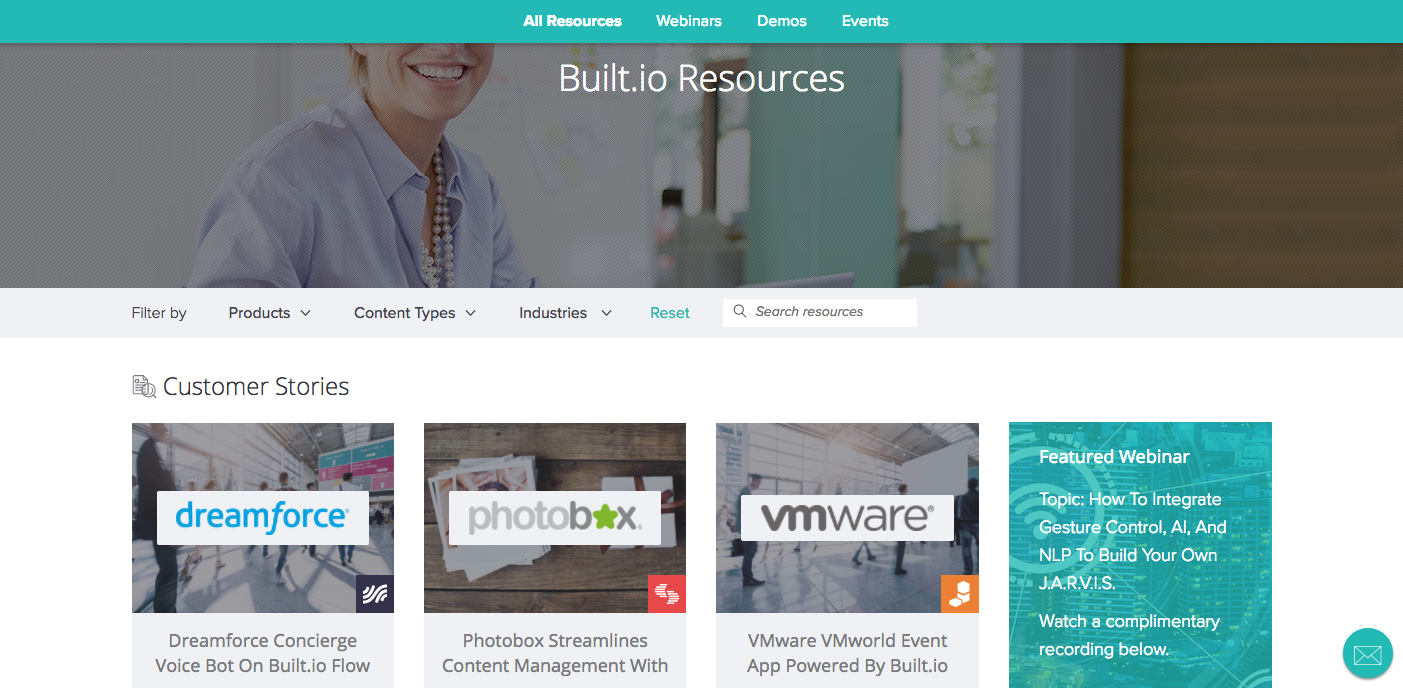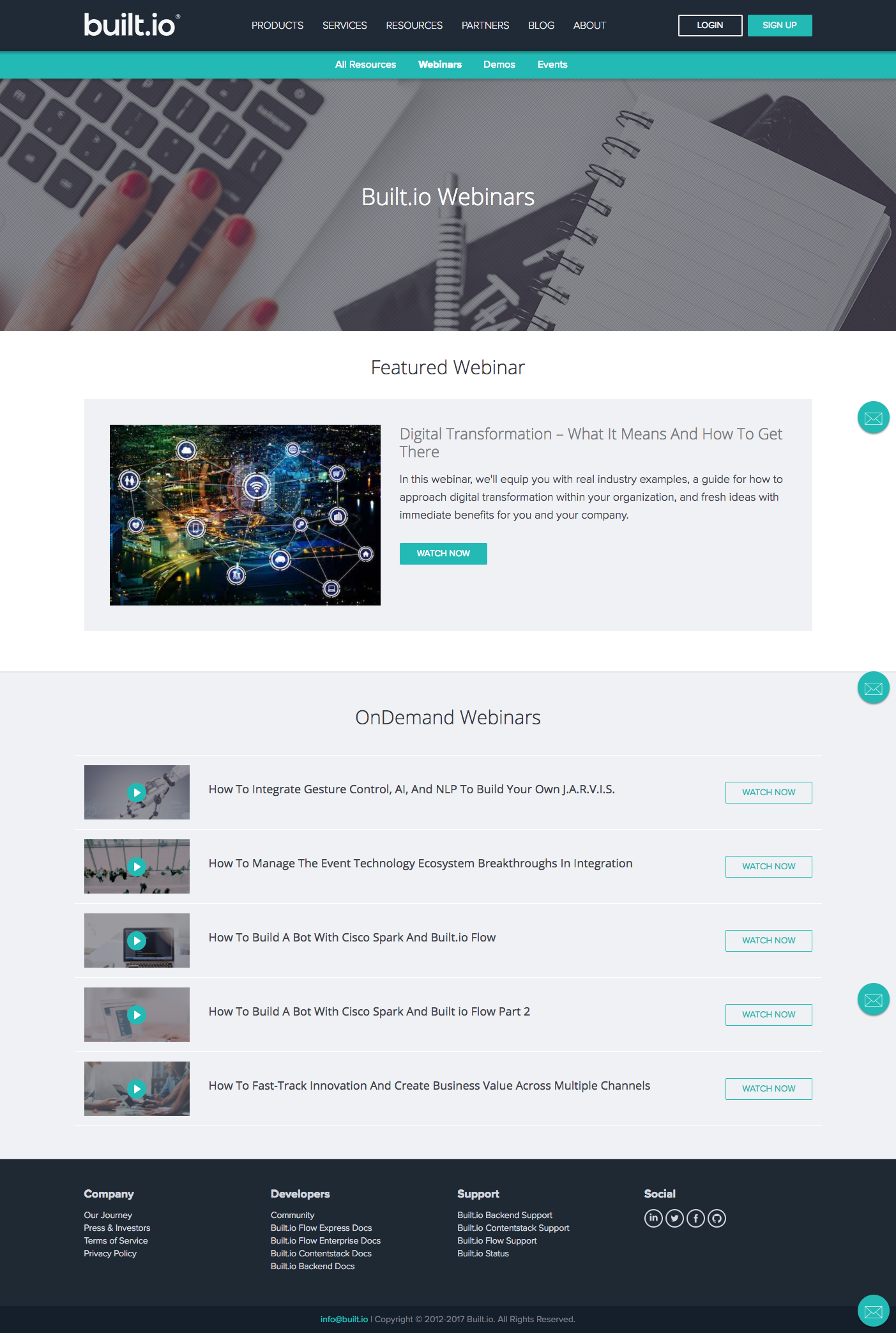When your products provide ground-breaking technology, you need a website to match.
How I made built.io’s brand story cohesive on the web.
What I did
Refreshing built.io’s website and brand messaging
Role: Director of Marketing, Messaging, Strategy, Writer
Company: Built.io
Year: 2016
Problem
Built.io, previously Raw Engineering, recently transitioned from being a service company to being a SaaS product company. It had three seemingly disparate products that were all API-based and could be used together or separately. It had seen some traction in what it called the “digital enterprise” space, but wanted to expand into Industrial IoT, connected spaces, and connected transportation. In addition it wanted to span across multiple verticles, like sports and entertainment.
It had only three out-dated case studies that focused on a product that was not a priority for the business, and the organization was strongly sales-oriented. It did not rely on the website to capture leads or tell its story because it did not yet understand what its story should be.
In addition, its flagship product, an integration platform, needed to cater to both self-service and enterprise customers.
Lastly it relied heavily on long-form copy to explain its complex products.Solution
Solution
The website needed to update its messaging and content strategy. In the end, I focused on the following:
Creating clear messaging that explained that Built.io’s products could work in a variety of contexts.
Packaging up the products as an enterprise suite that worked across verticals.
Upleveling the content and making it more visual.
Ensuring that the website acted as a lead generation and education machine.
Impact
Developed content marketing strategy including resource page that increased online sign ups (+4% QoQ) and time on page by over 2 minutes.
Increased inbound organic search traffic for company websites by 20%.
After several messaging sessions, I started with a home page refresh that reflected the changes and our goal of becoming a suite of digital transformation tools rather than one product or service.
The old home page
Confusing image, some mention of one other product, but no mention of a suite, and no tag line. Basically, WTF.
My refresh
Finally some clarity. Use all three tools together or separately. Understand their value. See all applicable industries through modern video.
And that tagline: Built-in… savings, security, innovation, flexibility, agility, automation and bots, speed-to-market, reporting and analytics, future-proofing, digital transformation…
A way to give more context
-
Connect with new things in new places
-
Share with people in new ways
-
Bridge the past and future



After clarifying our new messaging and positioning, I got to work on helping people learn more in a new resources section.
After the home page did the work of enticing people with messaging, I needed a way to keep them on the site. When I came on board to Built.io we didn’t have enough resources to support the goal of increasing web traffic and conversions. In the first few months I performed a content audit and mapped back to personas. Built.io has three key audiences: technical, semi-technical/high level, and business – which roughly translates to the following (in order):
1) Developers
2) IT managers or tech saavy business people
3) Marketers or people in sales, finance, or human resources. Each required their own content.
Throughout the first year I worked to garner case studies, source reports, interview company thought leaders and ghostwrite articles, create data sheets that helped explain our offerings, produce blog posts, videos, and other short forms of social media. l also launched a webinar program that remains our highest lead generation device to date. Additionally I added a demos section to automate part of the customer journey. Each content type maps back to a persona.
Under my leadership and direction, we created the resource center, time in the site increased 200% and the bounce rate dropped 10%. Content increased from two case studies, two reports, one white paper, and three blueprints to a fully formed center (nine case studies, four white papers, four reports, seven data sheets, six webinars, one demo and three updated blueprints, and 100 articles and blog posts ) in August 2017, with more in the pipeline.




In tandem, I leveraged analyst relations and industry awards to drive awareness and traffic back to the site.
I worked with C-suite to define the corporate brand positioning that we shared with analysts. I also shared these storylines with our press team and worked with them on a program to garner awards in our industries to help build awareness and improve brand affinity.
Notably during my tenure we got two hits from the leading analyst Gartner.


